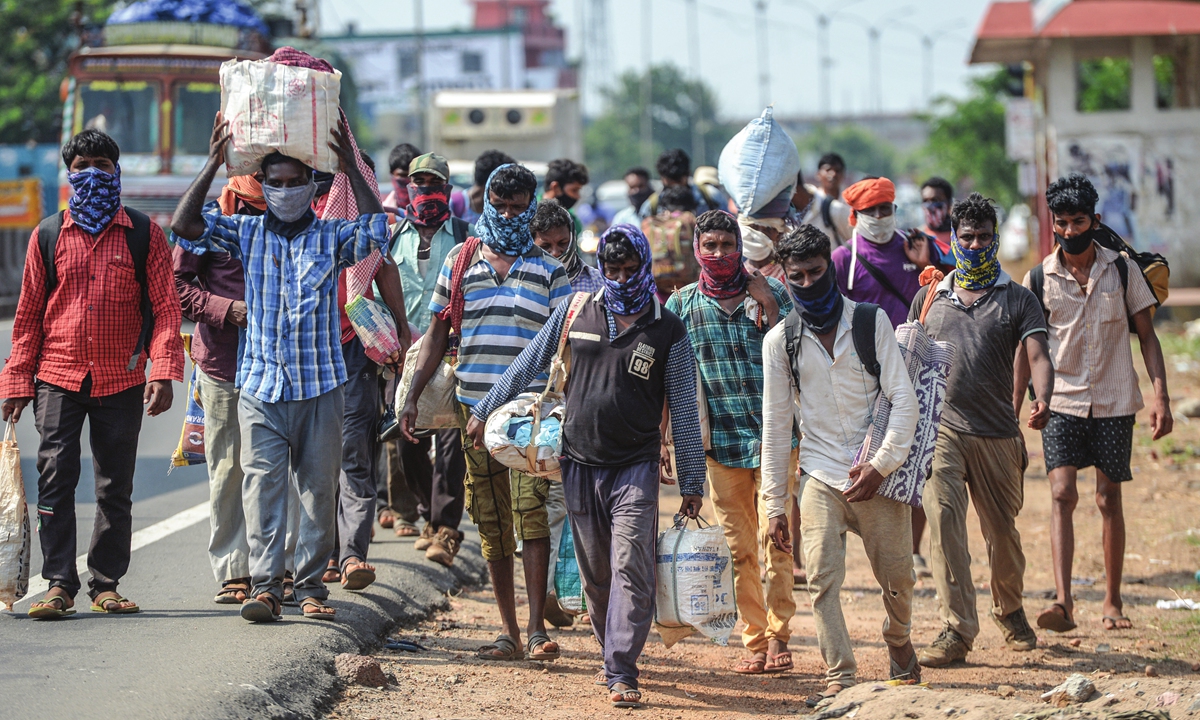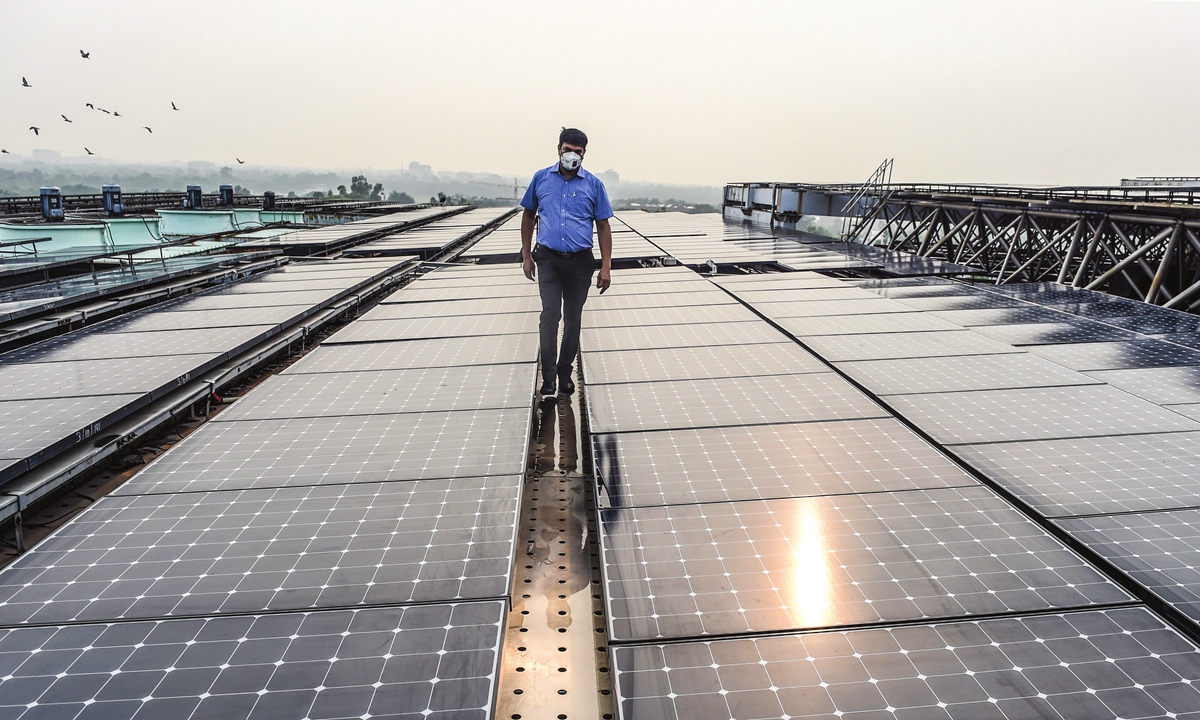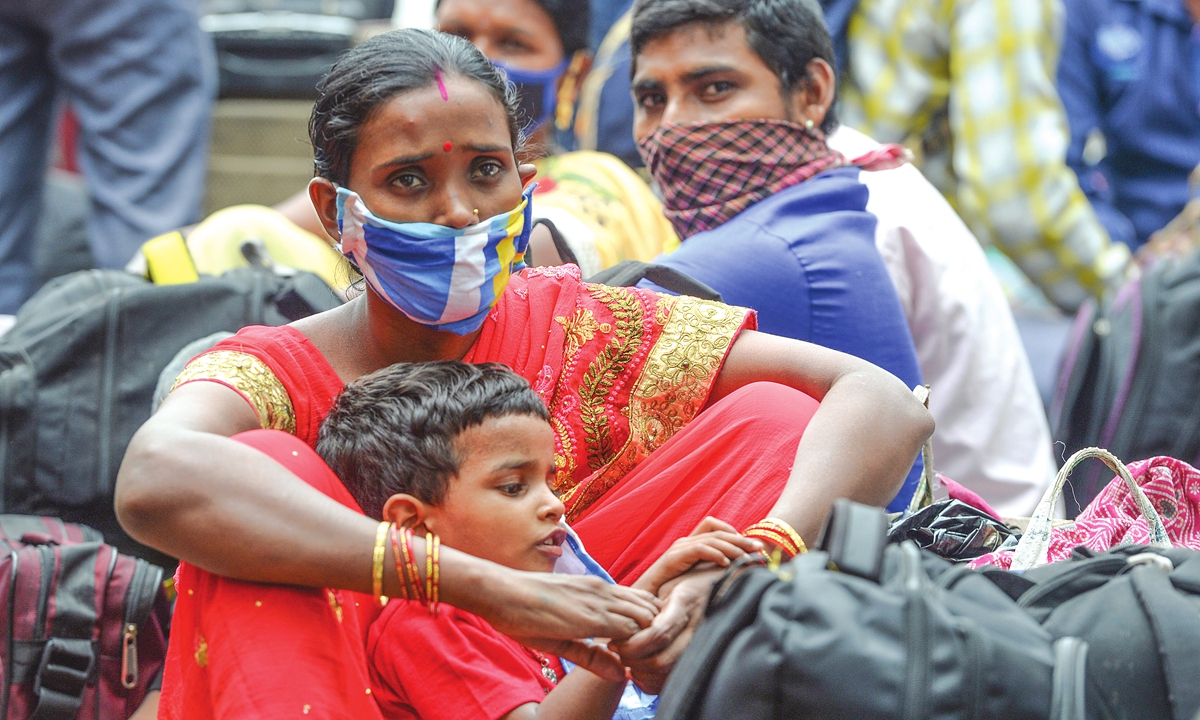Solar tech opens doors for India’s farmers
Source: Reuters Published: 2020/7/28 19:03:40
The Chotanagpur Plateau in eastern India, crisscrossed with streams, once was lush green even in winter.

"Our land is rich, but our people are poor," said Gagu Oraon, a farmer from the Oraon indigenous community in Tukutoli, a village that has struggled with low yields and crop failure. But now clean-energy technology is providing help, in the form of a new solar-powered irrigation system that helps about 30 farmers get dependable water, allowing them to diversify their crops without producing more greenhouse gases.
Along with rice, the farmers now are growing vegetables and selling the surplus - something that is providing more income and stability at home, Oraon noted.
"For young people in the village, it's a relief not migrating for work," he said.
A rising number of Indian farmers are turning to solar-powered irrigation, which agricultural experts say can help communities feed their families and generate income while battling climate threats - all without producing more planet-warming emissions.
As part of a project by the Transform Rural India foundation (TRI), a nonprofit based in New Delhi, farmers in Tukutoli installed a solar system that pumps water from a small rivulet and provides reliable irrigation to about 12 hectares.
The farmers can control the amount of water that goes to their rice crops and also grow vegetables such as cauliflower, eggplant, okra and cabbage.
"Tribal communities, who typically do not have access to irrigation, are among the most vulnerable to climate risks," said Anas Rahman, a researcher with the Council on Energy, Environment and Water (CEEW), a New Delhi-based think tank.
"Providing access to irrigation is important as a climate adaptation measure." Solar pumps can be the main pillar for a new vision of more climate-friendly agricultural development, he added.
Clean and available
In the uplands of Chotanagpur Plateau and other parts of Jharkhand, temperatures have been rising and rainfall patterns have become more unpredictable in recent decades, a phenomenon that climate experts attribute to global warming.
A 2018 study by researchers from the Birla Institute of Technology Mesra and Central University of Jharkhand found a "declining trend of cumulative rainfall" in the region between 1984 and 2014.
Irrigation can help stabilize crop production in the face of climate change, farming experts say, and solar-powered systems have advantages over diesel systems and rainfed farming.
"Diesel contributes to carbon emissions," said Satyabrata Acharyya, a development expert at Professional Assistance for Development Action (PRADAN), a nonprofit working in Jharkhand.
"Also tribal farmers living in remote areas find it difficult to travel long distances to buy diesel from fuel stations," he told Reuters.
"Solar energy is available on-site, the machinery is easy to maintain and it is clean energy," he added.

Until they got their irrigation system, many men from the village of Chandrapur, home to about 100 families from the Munda indigenous community, migrated to places like Kerala and Punjab states in search of work and wages.
In 2018, rice farmers in the village on Chotanagpur Plateau banded together with TRI to install a solar-powered irrigation system.
"Many of us are now cultivating cauliflowers that fetch a good price in the market," said Mangra Bhengra, a young farmer who runs and maintains the village's solar pump.
"Who needs to migrate if you can make money in the village?" he asked.
Vegetables require less water than rice, and drip irrigation, which puts small amounts of water only where needed, can cut water consumption by 30 to 70 percent while increasing crop yield by up to 60 percent compared to irrigating fields by flooding them, said Bikash Das, senior scientist at the Indian Council of Agricultural Research (ICAR).
Access to irrigation also can provide farmers with a more reliable income, since one farm can produce several yields of vegetables each year, he added.
"Many vegetables are ready in three months, which means farmers can gather three or four harvests in a year," Das said, noting that they can make between 50,000 and 100,000 rupees ($670-$1,340) per year from one acre of vegetables.
Solar-based irrigation projects in India have increased from about 18,000 in 2014-15 to nearly 200,000 in recent years, according to the 2020 United Nations Water and Climate Change report.
In the past few years, PRADAN, TRI and other nonprofits have helped install more than 700 solar-powered irrigation systems in impoverished villages in Jharkhand, representatives of the groups told Reuters.
The success of such interventions prompted India's federal government in 2019 to launch an effort to install about 2 million solar pumps around India by 2022, said the UN report.
"There is a strong need for irrigation methods that can provide adequate hydration for crops even with a limited supply of water, without requiring significant energy input or financial capital," said Das at ICAR.

Some farmers and climate experts point to the expense of buying and installing such systems as an obstacle to wider uptake of solar irrigation.
The upfront cost of installing a solar-powered system is higher than that of installing diesel-run irrigation, noted Ashok Kumar, a director at TRI.
"But solar is more cost-efficient in the long run, because recurring costs are virtually nil. The rising cost of diesel to run pumps can be prohibitive for smallholder farmers," he said.
Under a $100 million World Bank project, about 2,000 solar irrigation systems will be installed in Jharkhand by 2023.
Newspaper headline: Climate-friendly

Migrant workers return to their hometowns in Jharkhand, after the government eased nationwide lockdowns imposed as a preventive measure against COVID-19, in the outskirts of Chennai, India on May 7. Photos: AFP
But increasingly erratic rainfall in recent years has made life much harder for the region's impoverished indigenous subsistence farmers, most of whom rely on monsoon rains between June and September to grow a thirsty rice crop."Our land is rich, but our people are poor," said Gagu Oraon, a farmer from the Oraon indigenous community in Tukutoli, a village that has struggled with low yields and crop failure. But now clean-energy technology is providing help, in the form of a new solar-powered irrigation system that helps about 30 farmers get dependable water, allowing them to diversify their crops without producing more greenhouse gases.
Along with rice, the farmers now are growing vegetables and selling the surplus - something that is providing more income and stability at home, Oraon noted.
"For young people in the village, it's a relief not migrating for work," he said.
A rising number of Indian farmers are turning to solar-powered irrigation, which agricultural experts say can help communities feed their families and generate income while battling climate threats - all without producing more planet-warming emissions.
As part of a project by the Transform Rural India foundation (TRI), a nonprofit based in New Delhi, farmers in Tukutoli installed a solar system that pumps water from a small rivulet and provides reliable irrigation to about 12 hectares.
The farmers can control the amount of water that goes to their rice crops and also grow vegetables such as cauliflower, eggplant, okra and cabbage.
"Tribal communities, who typically do not have access to irrigation, are among the most vulnerable to climate risks," said Anas Rahman, a researcher with the Council on Energy, Environment and Water (CEEW), a New Delhi-based think tank.
"Providing access to irrigation is important as a climate adaptation measure." Solar pumps can be the main pillar for a new vision of more climate-friendly agricultural development, he added.
Clean and available
In the uplands of Chotanagpur Plateau and other parts of Jharkhand, temperatures have been rising and rainfall patterns have become more unpredictable in recent decades, a phenomenon that climate experts attribute to global warming.
A 2018 study by researchers from the Birla Institute of Technology Mesra and Central University of Jharkhand found a "declining trend of cumulative rainfall" in the region between 1984 and 2014.
Irrigation can help stabilize crop production in the face of climate change, farming experts say, and solar-powered systems have advantages over diesel systems and rainfed farming.
"Diesel contributes to carbon emissions," said Satyabrata Acharyya, a development expert at Professional Assistance for Development Action (PRADAN), a nonprofit working in Jharkhand.
"Also tribal farmers living in remote areas find it difficult to travel long distances to buy diesel from fuel stations," he told Reuters.
"Solar energy is available on-site, the machinery is easy to maintain and it is clean energy," he added.

An employee walks among solar panels installed on the Indian Environment Ministry building in New Delhi, India on July 17.
Reliable incomeUntil they got their irrigation system, many men from the village of Chandrapur, home to about 100 families from the Munda indigenous community, migrated to places like Kerala and Punjab states in search of work and wages.
In 2018, rice farmers in the village on Chotanagpur Plateau banded together with TRI to install a solar-powered irrigation system.
"Many of us are now cultivating cauliflowers that fetch a good price in the market," said Mangra Bhengra, a young farmer who runs and maintains the village's solar pump.
"Who needs to migrate if you can make money in the village?" he asked.
Vegetables require less water than rice, and drip irrigation, which puts small amounts of water only where needed, can cut water consumption by 30 to 70 percent while increasing crop yield by up to 60 percent compared to irrigating fields by flooding them, said Bikash Das, senior scientist at the Indian Council of Agricultural Research (ICAR).
Access to irrigation also can provide farmers with a more reliable income, since one farm can produce several yields of vegetables each year, he added.
"Many vegetables are ready in three months, which means farmers can gather three or four harvests in a year," Das said, noting that they can make between 50,000 and 100,000 rupees ($670-$1,340) per year from one acre of vegetables.
Solar-based irrigation projects in India have increased from about 18,000 in 2014-15 to nearly 200,000 in recent years, according to the 2020 United Nations Water and Climate Change report.
In the past few years, PRADAN, TRI and other nonprofits have helped install more than 700 solar-powered irrigation systems in impoverished villages in Jharkhand, representatives of the groups told Reuters.
The success of such interventions prompted India's federal government in 2019 to launch an effort to install about 2 million solar pumps around India by 2022, said the UN report.
"There is a strong need for irrigation methods that can provide adequate hydration for crops even with a limited supply of water, without requiring significant energy input or financial capital," said Das at ICAR.

Migrant workers and families wait on the roadside before boarding special trains to Bihar and Jharkhand states after the eased nationwide lockdowns on June 11.
Cost hurdlesSome farmers and climate experts point to the expense of buying and installing such systems as an obstacle to wider uptake of solar irrigation.
The upfront cost of installing a solar-powered system is higher than that of installing diesel-run irrigation, noted Ashok Kumar, a director at TRI.
"But solar is more cost-efficient in the long run, because recurring costs are virtually nil. The rising cost of diesel to run pumps can be prohibitive for smallholder farmers," he said.
Under a $100 million World Bank project, about 2,000 solar irrigation systems will be installed in Jharkhand by 2023.
Newspaper headline: Climate-friendly
Posted in: ASIA-PACIFIC